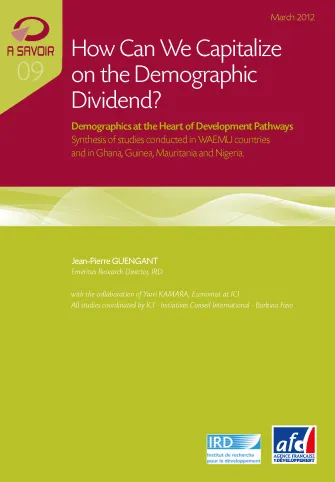Share the page
How Can We Capitalize on the Demographic Dividend? Demographics at the Heart of Development Pathways
Published on

In the coming decades, West African countries could benefit from a “demographic window of opportunity” in order to reduce their poverty. The entry of 160 million young people into the labor market between 2010 and 2030 can accelerate economic growth. However, these countries will only benefit from this “demographic dividend” – which the now emerging countries have been doing for the past 40 years – if they lower their fertility rates. This in turn will reduce the number of inactive dependents per worker. Yet with an average of over five children per woman, these rates continue to be the highest in the world.
But how should this major demographic turning point be addressed? This publication provides a synthesis of an extensive study conducted in 12 West African countries. It seeks to identify the public policies and levers for action (family planning and promotion of contraception in particular) that are likely to meet this challenge. To achieve this, the countries in question will need to allocate three to five times more resources to this policy than they do today.
Useful Information
-
Authors
-
Jean-Pierre GUENGANT
-
Edition
-
9
-
Number of pages
-
86
-
ISSN
-
2105-553 X
-
Collection
-
To Know
-
Other languages
